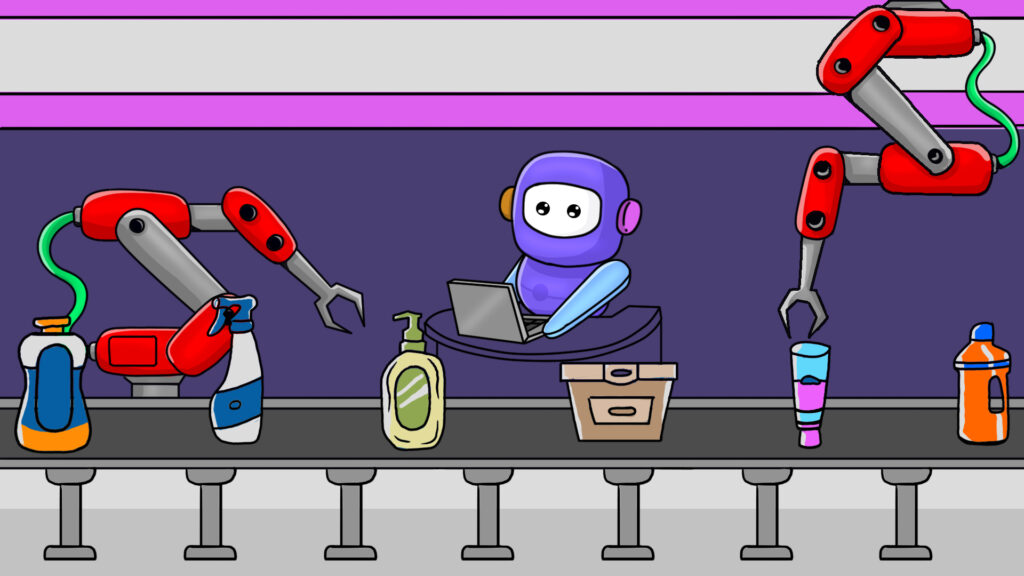
There are plenty of reasons to be interested in multibranding. Maybe you have more than one business and you’re not sure how to market them all under one roof. Or maybe you have ideas for new products or services that wouldn’t fit within your current brand. In any case, this blog will help you pull off a multibranding strategy that increases your market share. As a design company that’s worked with thousands of brands around the world, we know what differentiates a brand from the noise.

What Is Multibranding?
Plain and simple, multi-branding is when one company has several sub-brands with different names. The products and services you offer may or may not compete with one another directly. While multibranding is a risk, many companies choose to take the leap because the benefits are often worth it. Depending on what you offer, your brands may market to the same audience or different audiences. It can also be useful to create sub-brands if you want to offer products at very different price points.
Famous Examples of Multibranding
There are plenty of well-known examples of multibranding. In fact, the CPG industry is chock full of companies that use multiple brands to sell various lines of products.
Coca Cola sells Sprite Dasani, and Smart Water. P&G has over 60 brands under its umbrella, and even Comcast owns Hulu, CNBC, and other brands. It seems that among large corporations, multibranding is more of a rule than an exception.
How to Create a Multibranding Strategy that Sticks
There are a few different ways to execute a multibranding strategy that moves the needle for your company and its sub brands.

1. The first and most obvious step in the process is getting the facts down.
- How many sub-brands are you creating?
- Who is the target market for each of them?
- Do you have logos, websites, and landing pages set up?
Branding is a long-winded process, and DIY branding might not be feasible with your schedule and resources. Fortunately, designers can help you put together all of these brand assets – logos, web graphics, illustrations, business cards, and packaging. It’s a good idea to have separate branding kits for each sub brand so they’re ready to resource whenever your team needs them. By allocating resources such as marketing budget, personnel, and production capacity to each brand, you’ll ensure they receive the necessary support.
2. Once the groundwork is laid, it’s time to start thinking about marketing strategy. This is where multibranding can be confusing. You’ll need to:
- Decide on your core message for each sub brand. (use these messaging templates for clarity)
- Do market research and determine the best outlets for reaching people (email marketing, social media, etc.)
- Create a content calendar for each sub brand and assign someone to the task of content creation.
- Lean on automation to manage the workload.
3. As you develop your strategy, explore recent trends in multibranding.
- D2C can simplify the process of running multiple brands. You may be able to go to market much quicker when you cut out the reseller. Plus, you get control of the entire production process with a D2C model.
- Fast production is another trend that supports multibranding. When products can be made on-demand rather than seasonally, you can think on your feet. Responding to consumer trends becomes easier.
- Adjust your strategy as necessary based on the performance of each brand and changes in the market. This may involve discontinuing underperforming brands, launching new brands, or modifying the positioning of existing brands.
Still working out your color scheme? Our blog on the meaning of brand colors will help you get started.
Multibranding Pros and Cons
Despite the hype around multibranding there are things to consider before making a decision. Let’s start with the potential pitfalls.
The Cons
Cannibalization is an issue that may arise for some brands. This is when some of your products compete with your other products. For example, a haircare company can release a line of shampoo products under one brand and another line of shampoo products under another. While it can be argued that they’re taking up more space in the market, they may also end up battling themselves. This is specifically true if each product line’s target market is the same.
Another issue to consider is juggling multiple target audiences while maintaining trust. Consumers aren’t always thrilled to find out about multibranding. For example, if a health-conscious consumer finds out that Coca Cola sells the Smart Water they buy, it may encourage them to switch to a brand that actually matches their values. This is why it’s a much more powerful strategy to be transparent. That means housing multiple brands under one cohesive roof – complimentary products and services that uphold similar values.
The last con of multibranding is the likelihood that your workload will be larger – at least temporarily. Once your businesses take off, you can delegate and hire out tasks as needed. But you’ll still be managing multiple companies and thinking about them as separate entities. This is a lot to manage, and you’ll need to make sure you have enough help to get everything done.
The Pros

While some warn about cannibalization, the flip side is that having more products on the market can turn out to be an upside. Even if you are edging out your other products, you may also be edging out more of your competition that you otherwise would have.
Another thing worth mentioning is that you have multiple opportunities to connect with customers who brand hop. For those that don’t love one of your brands or products, they may love something else from you. When your offerings are valuable, providing more options can increase market share.
Lastly, brand faux pas are contained when companies have a multibranding strategy. You can survive even major mishaps when your other brands are separate from the drama. For example, critics have accused Nestle of a number of serious, unethical business practices. But many of their sub brands get lots of positive publicity. This isn’t to say you should use multibranding to get away with unethical practices. It’s simply to say that your entire conglomerate probably won’t suffer if you make a mistake in one area and do your best to correct it.
At the end of the day, multibranding is right for some companies and wrong for others. It’s about figuring out your goals and how you want to position yourself across all of the markets you’re in.
Graphic Design for Your Multibranding Strategy
If you’re looking for digital assets to help you brand your business and build a reputation, Penji can help. Our team of world class graphic designers create custom graphics according to your guidelines. Get your first draft in as little as 24 hours, request revisions, and be on your way – stunning designs in hand.
See graphic design examples of how we can help you streamline your design process.
About the author

Brianna Johnson
Brianna is a professional writer of 10+ years who specializes in branding, marketing, and technology content.









